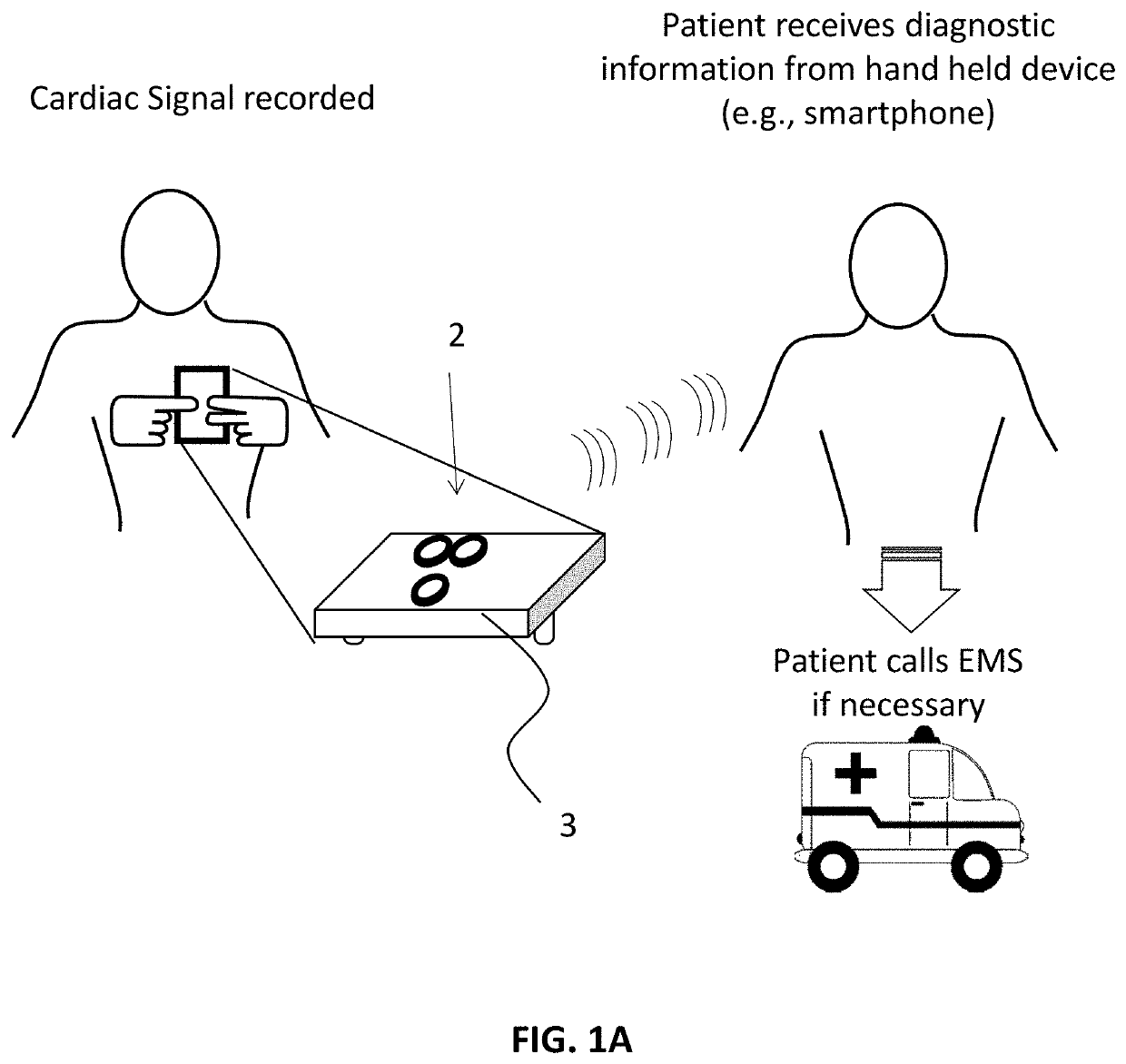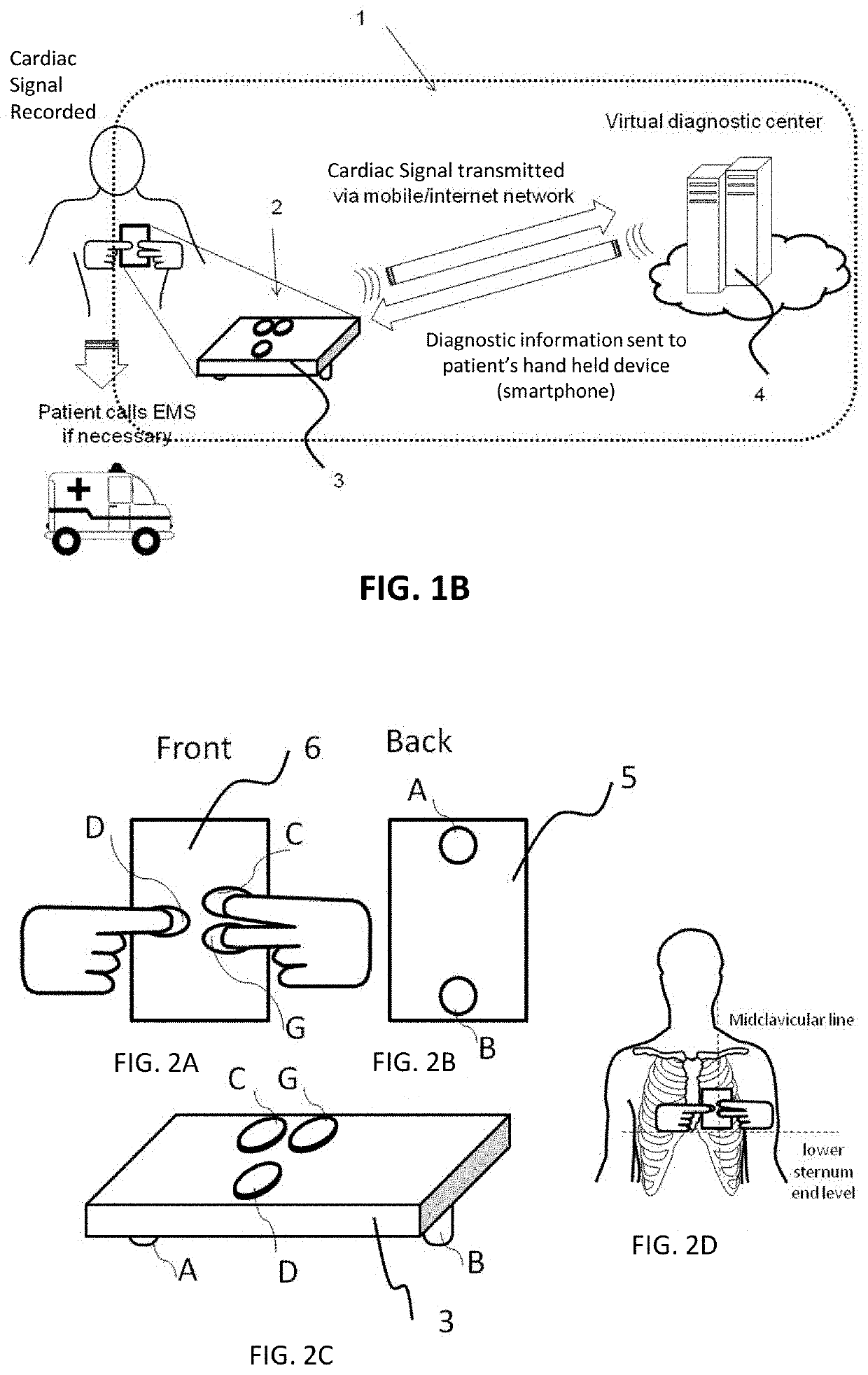Electrocardiogram patch devices and methods
a technology of electrocardiography and patch device, which is applied in the field of electrocardiography, can solve the problems of difficult, unreasonable, and difficult to reliably use of patients, and achieve the effect of reducing the risk of cardiac arrest, and reducing the patient's overall cardiac arrest ra
- Summary
- Abstract
- Description
- Claims
- Application Information
AI Technical Summary
Benefits of technology
Problems solved by technology
Method used
Image
Examples
examples
[0209]FIG. 21A illustrates another example of a patch (e.g., adhesive) apparatus for long-term monitoring and detection of 12-lead equivalent ECGs. In FIG. 21, rather than all of the finger electrodes being coupled to the same housing, the patient (or a caregiver or medical professional) may separately attach the housing having at least two skin-contacting (“chest”) electrodes 2105 that may be coupled by a wire 2108 connecting the chest electrodes 2117, 2119 (and one or more finger electrodes 2121) to a separate patch 2107 that includes a second finger electrode and / or an arm electrode 2125. In some examples the separate patch may be adhesively secured to the shoulder or arm (e.g., left shoulder / arm) and used instead of the derived arm lead. The second finger electrode 2123 in this example may be omitted or may be used as a reference.
[0210]FIG. 21B shows another example of a patch device with a center, heart, patch region 2105′ that is electrically coupled via a pair of tethers 2108...
PUM
 Login to View More
Login to View More Abstract
Description
Claims
Application Information
 Login to View More
Login to View More - R&D
- Intellectual Property
- Life Sciences
- Materials
- Tech Scout
- Unparalleled Data Quality
- Higher Quality Content
- 60% Fewer Hallucinations
Browse by: Latest US Patents, China's latest patents, Technical Efficacy Thesaurus, Application Domain, Technology Topic, Popular Technical Reports.
© 2025 PatSnap. All rights reserved.Legal|Privacy policy|Modern Slavery Act Transparency Statement|Sitemap|About US| Contact US: help@patsnap.com



